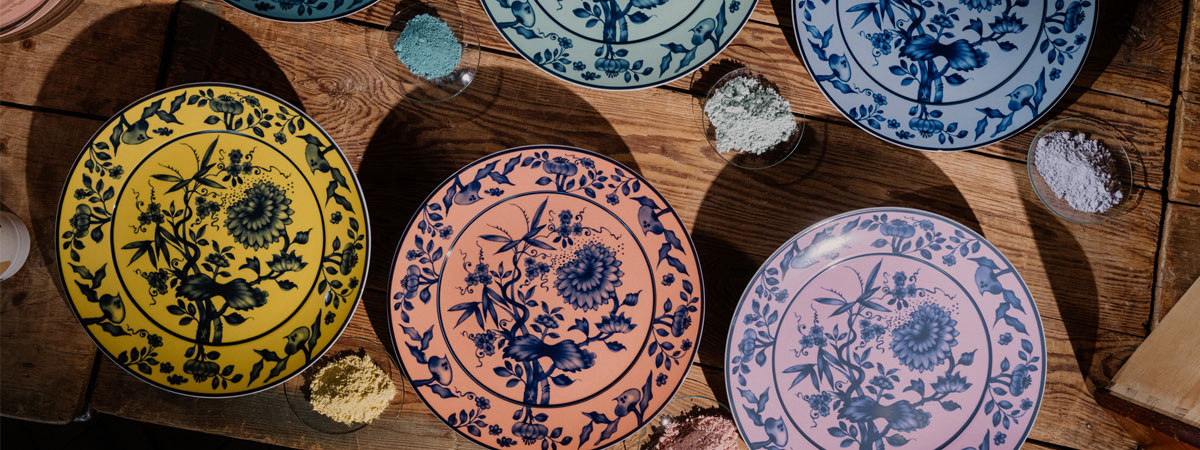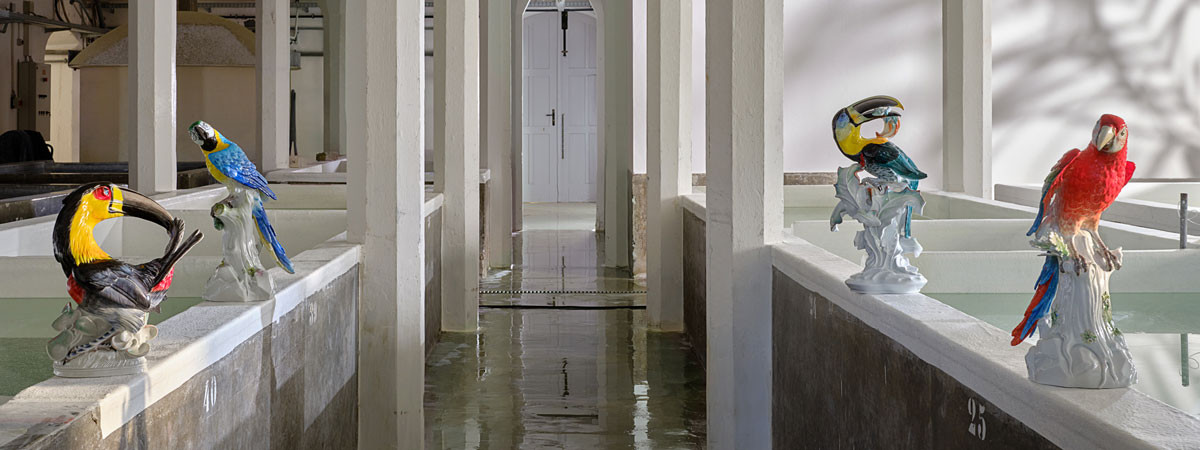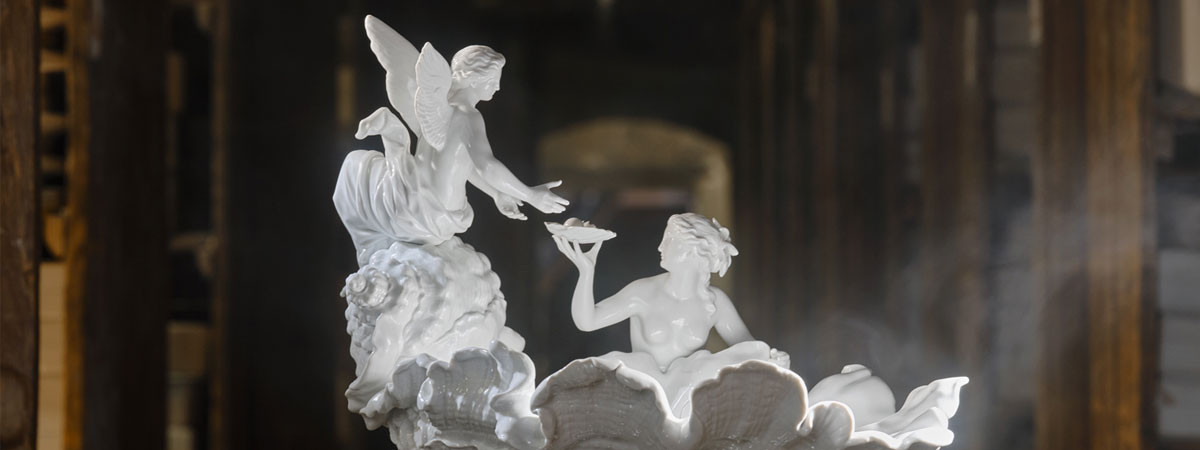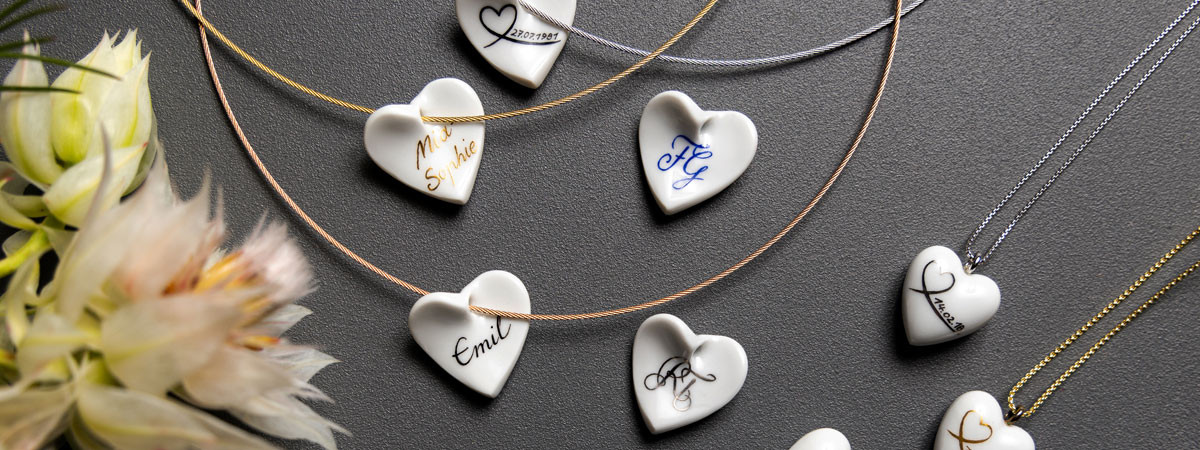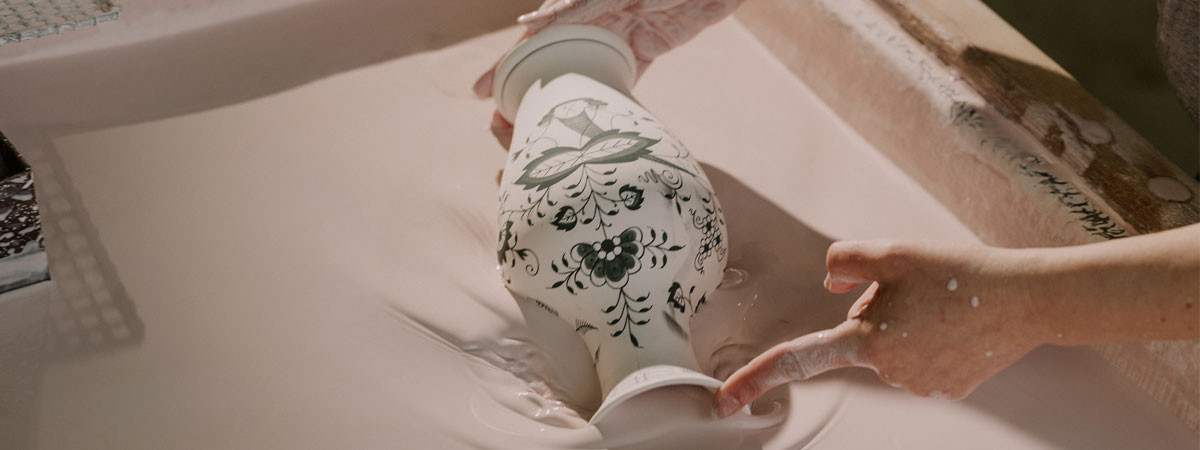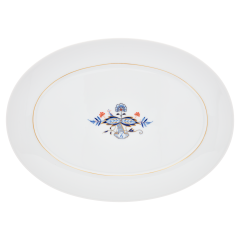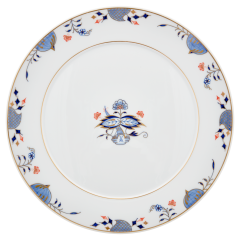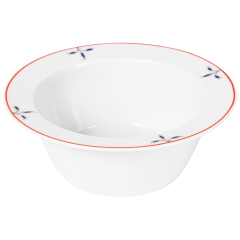NOBLE BLUE
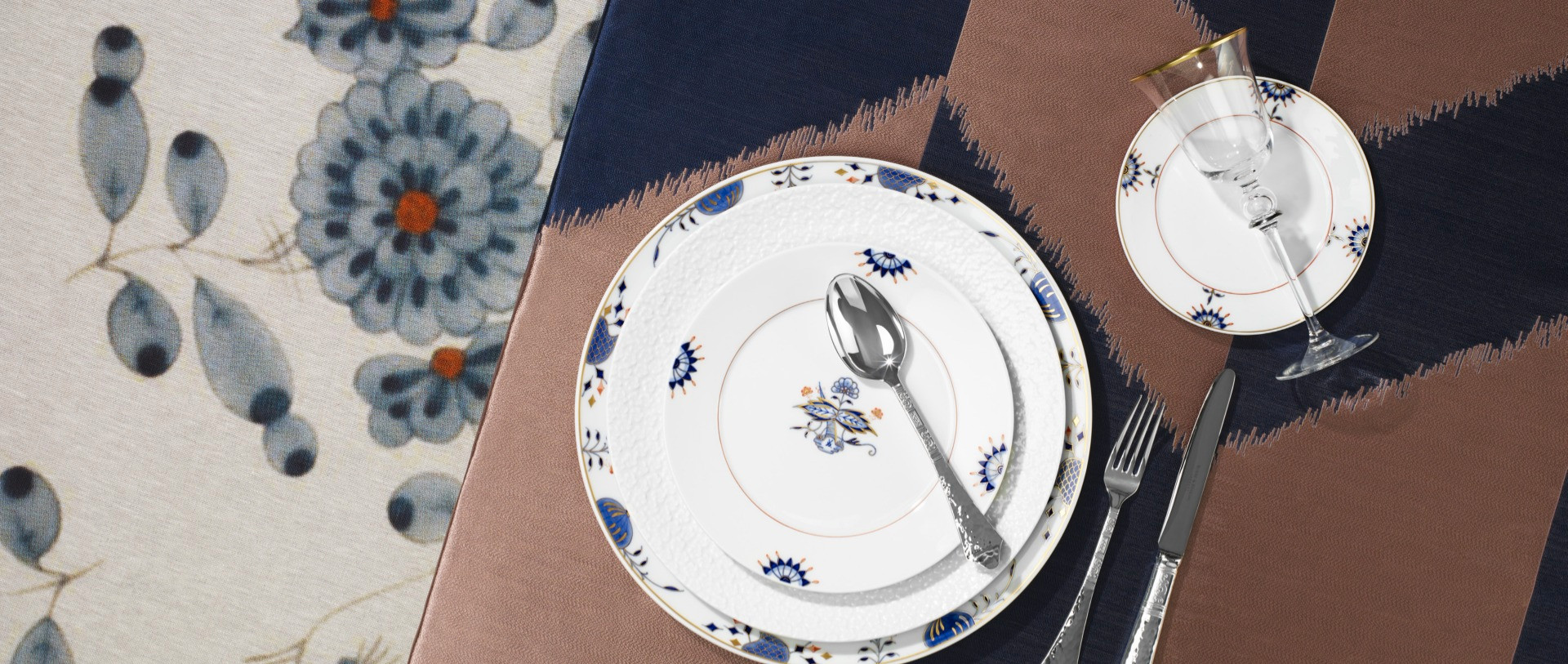 " />
" />With “Noble Blue” MEISSEN takes on its iconic “Onion Pattern” as the most successful blue porcelain pattern in history and sets it into a modern context. The creation of the “Onion Pattern” is rooted in the development of Meissen’s blue painting technique and its particular aesthetic effect on porcelain. Immediately after the invention of the first European porcelain and the founding of the manufactory in 1710, the search for a very special blue began – a blue that would emphasise the white lustre of the porcelain while at the same time harmonising with it. After a number of tests, the combination of cobalt and oxygen proved to be extremely heat-resistant and optimally suited to the high firing temperatures used for porcelain. Inspired by East-Asian porcelain, whose decorations were predominantly blue at the time, the world-famous “Onion Pattern” was created. The “onions” in the pattern are not in fact onions, but rather peaches and melons lining the rim, with bamboo stalks and delicate chrysanthemum blossoms gracing its centre. The stylised motifs of the Meissen pattern, reminiscent of onions, are purely the result of the lack of original patterns for the painters to use as models.
-
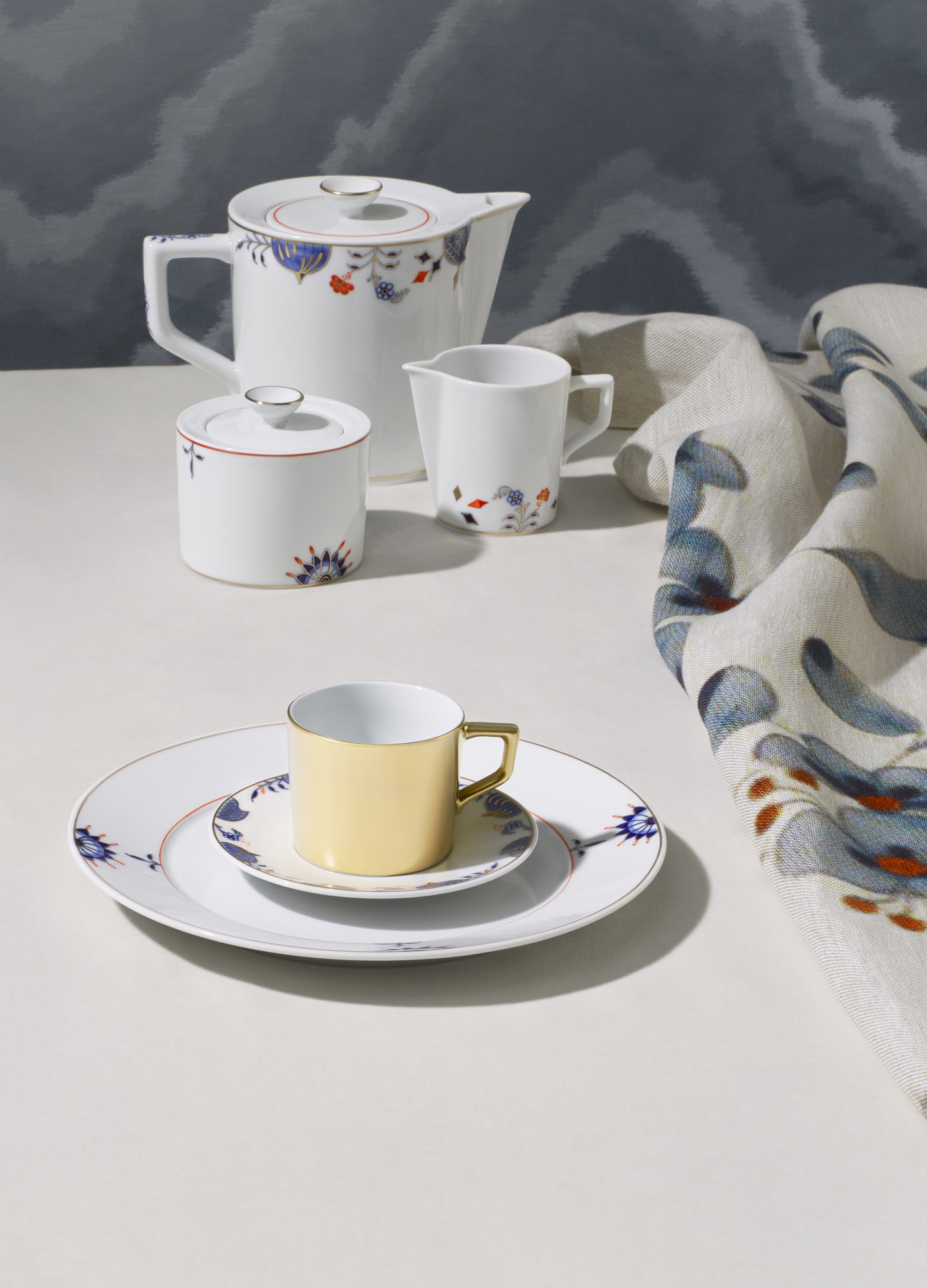 DecorMeissen’s “Onion Pattern”, which is nearly three centuries old, takes new shape in the “Noble Blue” collection, which contrasts the opulence of the original design with modern esprit. Classical elements are taken up in their original form and rearranged on the sleek “N°41” table service ensemble. In accordance with tradition, “Noble Blue”, like the “Onion Pattern” itself, features Meissen’s crossed swords embedded into the bamboo stalks – a symbol that guarantees the highest porcelain quality as a trademark of the manufactory. Characteristic for the pattern is the use of the manufactory’s own cobalt blue. Motif details in bright red and filigree gold finishes complement the colour palette of the “Noble Blue” table service and form the perfect contrasting complement to the deep cobalt hue.
DecorMeissen’s “Onion Pattern”, which is nearly three centuries old, takes new shape in the “Noble Blue” collection, which contrasts the opulence of the original design with modern esprit. Classical elements are taken up in their original form and rearranged on the sleek “N°41” table service ensemble. In accordance with tradition, “Noble Blue”, like the “Onion Pattern” itself, features Meissen’s crossed swords embedded into the bamboo stalks – a symbol that guarantees the highest porcelain quality as a trademark of the manufactory. Characteristic for the pattern is the use of the manufactory’s own cobalt blue. Motif details in bright red and filigree gold finishes complement the colour palette of the “Noble Blue” table service and form the perfect contrasting complement to the deep cobalt hue.
“With the ‘Noble Blue’ collection, the tradition of the most iconic blue pattern in porcelain history lives on in a contemporary form.”
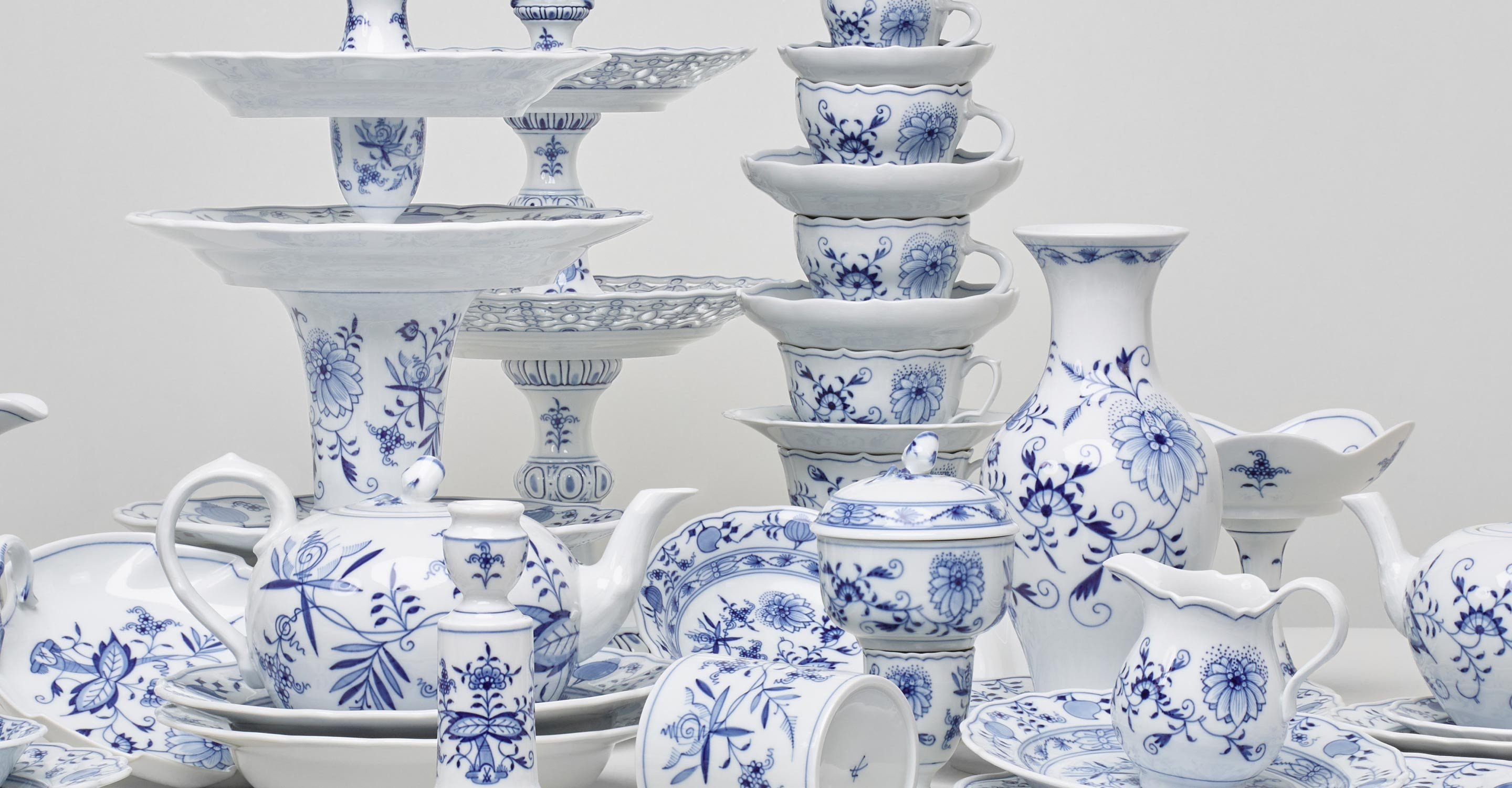
Fascinated by Chinese porcelain, which at that time was predominantly decorated using blue paint, Augustus the Strong demanded commensurate pieces from his manufactory. These demands were the impetus for Meissen’s deep connection with cobalt blue under-glaze painting.
-
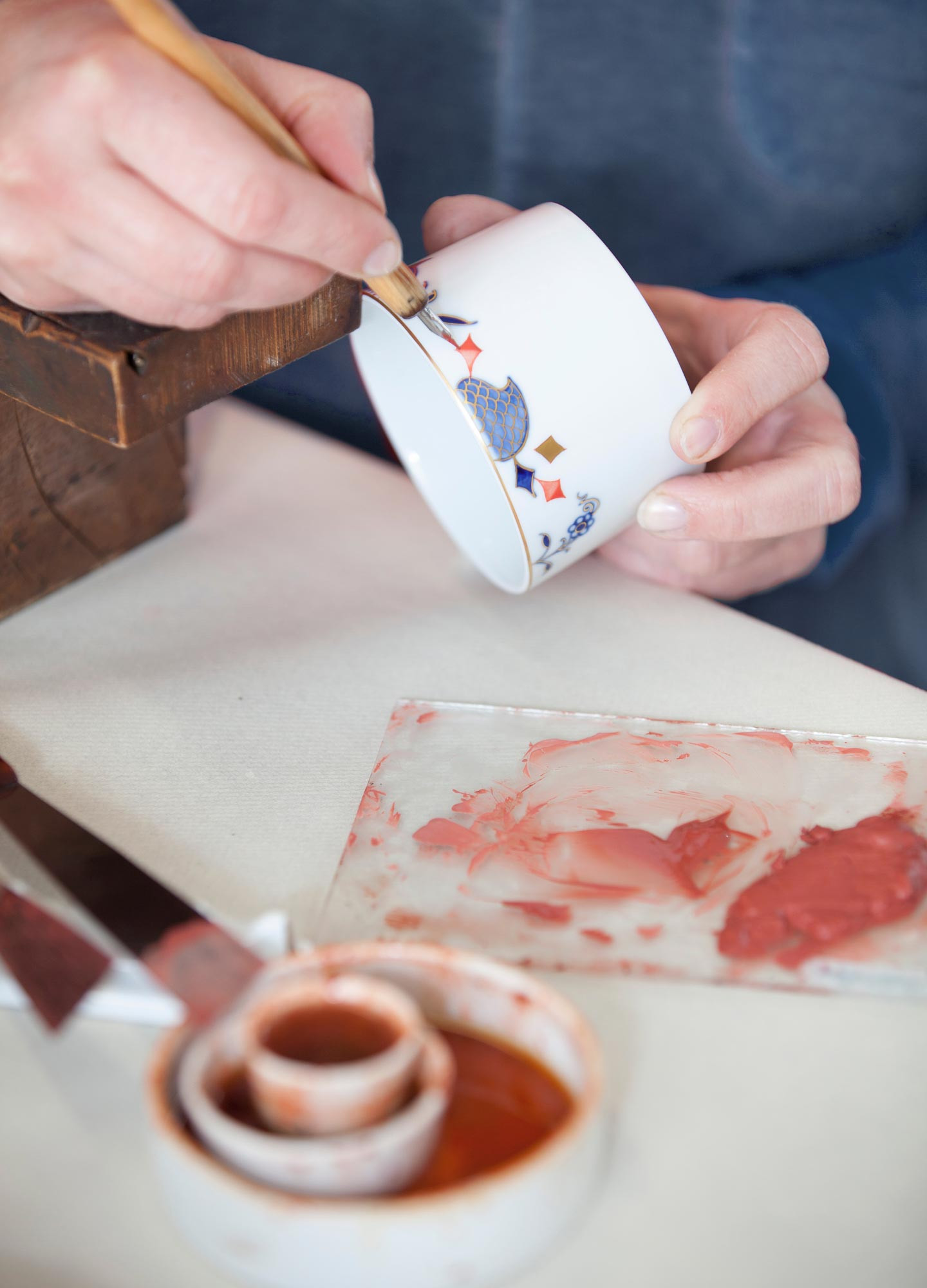 CraftsmanshipTwo special porcelain painting techniques are used in the creation of the “Noble Blue” design, both of which demand the ultimate in precision and attention to detail. During the under-glaze painting step, the manufactory’s cobalt blue paint is first applied to the unglazed porcelain by hand with fine brushstrokes. The porous biscuit immediately absorbs the paint, making any corrections impossible. The pattern now appears in a matte grey colour. It is only after glazing and the subsequent glost firing that the blue starts to shine. Special in-glaze paints are used for the subsequent red and gold detailing. Applied by hand with a steel spring, these colours sink into the glaze easily during the next decorative firing and are thus protected by it. A final polish brings out the lustre of the gold detailing.
CraftsmanshipTwo special porcelain painting techniques are used in the creation of the “Noble Blue” design, both of which demand the ultimate in precision and attention to detail. During the under-glaze painting step, the manufactory’s cobalt blue paint is first applied to the unglazed porcelain by hand with fine brushstrokes. The porous biscuit immediately absorbs the paint, making any corrections impossible. The pattern now appears in a matte grey colour. It is only after glazing and the subsequent glost firing that the blue starts to shine. Special in-glaze paints are used for the subsequent red and gold detailing. Applied by hand with a steel spring, these colours sink into the glaze easily during the next decorative firing and are thus protected by it. A final polish brings out the lustre of the gold detailing. -
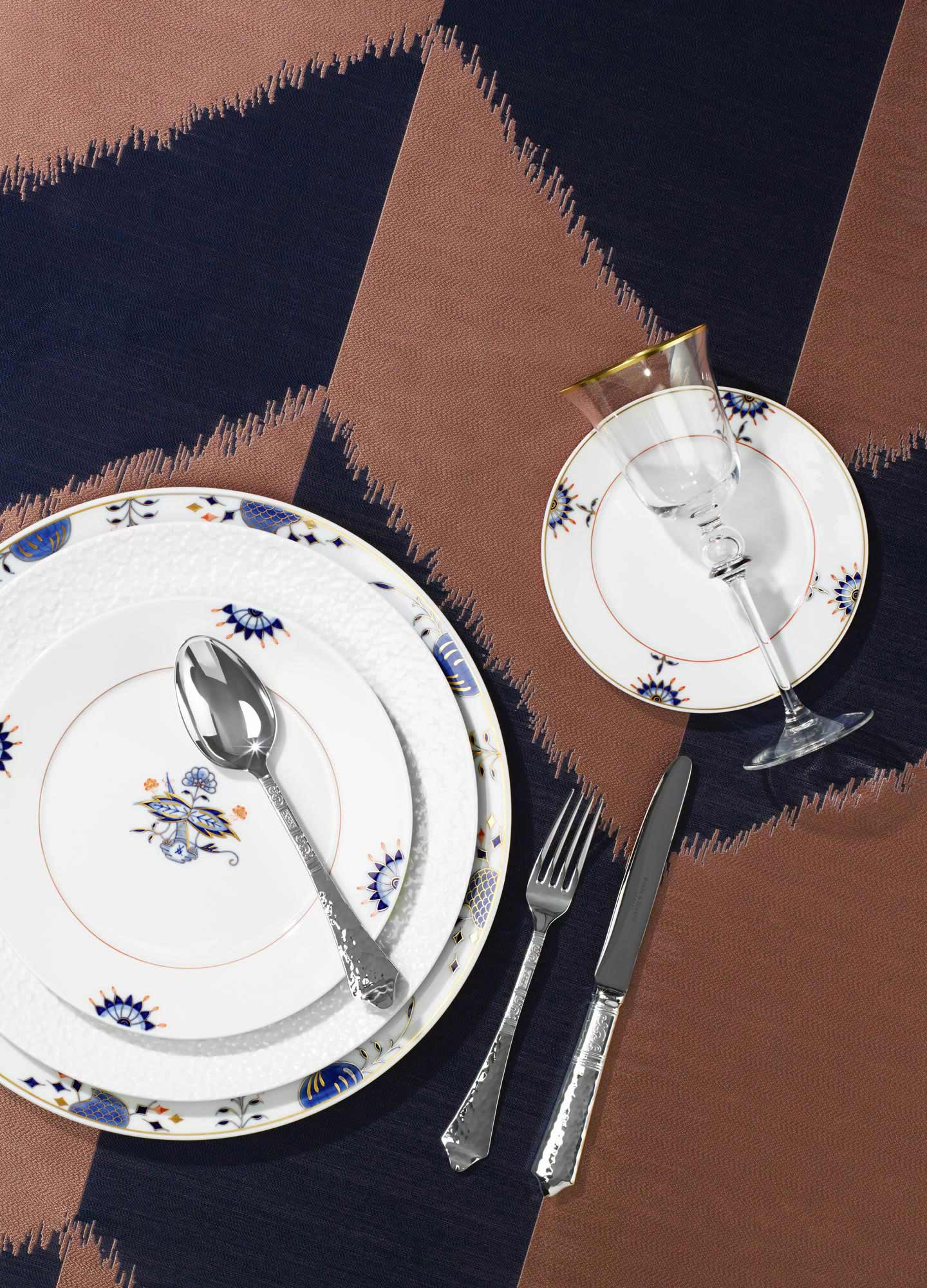 In the “Noble Blue” collection, the traditional “Onion Pattern” lives on in a contemporary form and adds a refined touch to the purist “N°41” shape. The diversity of its parts along with the richly varied pattern allows for varied table set-ups, depending on taste and occasion. The “N°41” shape also makes it possible to pair one saucer with three different cups. All 27 pieces of the “Noble Blue” collection are stackable and dishwasher-safe.
In the “Noble Blue” collection, the traditional “Onion Pattern” lives on in a contemporary form and adds a refined touch to the purist “N°41” shape. The diversity of its parts along with the richly varied pattern allows for varied table set-ups, depending on taste and occasion. The “N°41” shape also makes it possible to pair one saucer with three different cups. All 27 pieces of the “Noble Blue” collection are stackable and dishwasher-safe.

